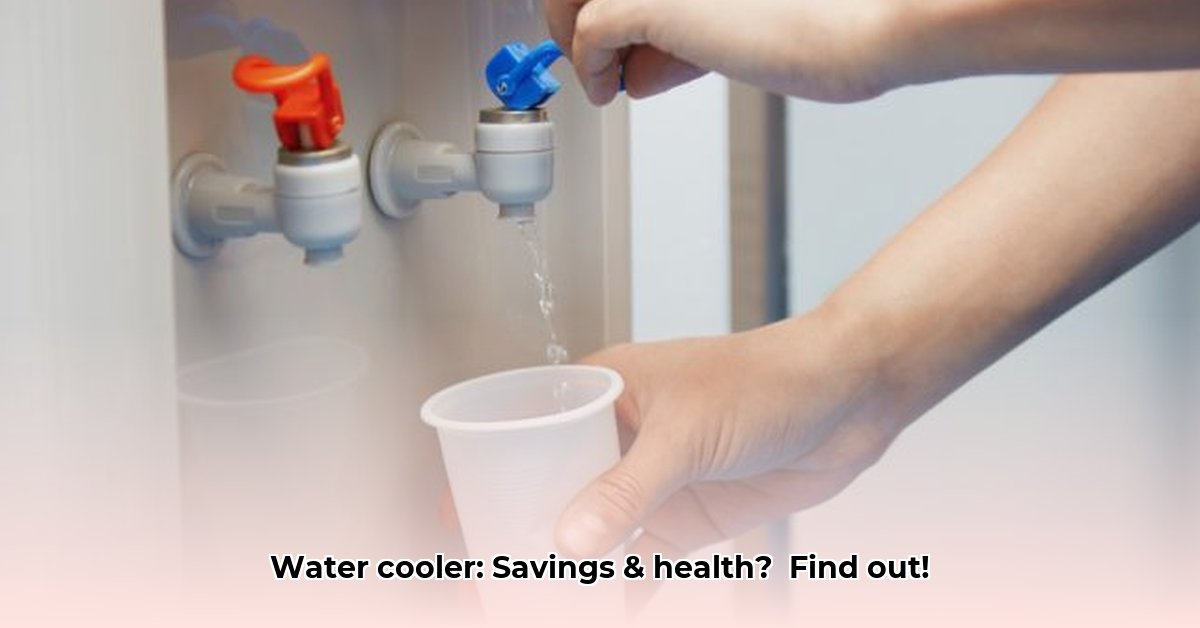
Choosing the right water cooler can significantly impact your health and budget. This comprehensive guide provides a step-by-step process to help you select the perfect model for your home or office, considering various factors like cost, convenience, and environmental impact. We'll explore different cooler types, compare features, and offer actionable advice to ensure optimal hydration and long-term savings.
Choosing the Right Water Cooler: A Step-by-Step Guide
Before diving into specific models, it's crucial to assess your needs. How much water do you consume daily? Do you require both hot and cold water? What is your budget? And how much space do you have available? Let's break it down step-by-step.
Step 1: Assessing Your Water Needs
- Estimate Daily Consumption: Count the number of glasses, bottles, or pitchers used daily by all users.
- Determine Number of Users: More users necessitate a larger-capacity cooler.
- Hot Water Requirement: Do you need hot water for beverages or other purposes?
- Space Measurement: Measure the available space to ensure the cooler fits comfortably.
Step 2: Selecting the Right Cooler Type
Three main types of water coolers exist, each with distinct advantages and disadvantages:
- Top-Loading Coolers: Affordable, but require manual bottle changes.
- Bottom-Loading Coolers: More convenient bottle changes than top-loading models, offering a balance between cost and convenience.
- Bottleless Coolers: Connected directly to your water supply, eliminating bottle changes and offering the most environmentally friendly option, but typically more expensive upfront.
Step 3: Comparing Features and Costs
Consider these factors when comparing models:
- Energy Efficiency: Look for Energy Star rated coolers to reduce electricity costs.
- Filtration: Advanced filtration systems improve water taste and purity. Assess the importance of this feature for your needs.
- Maintenance: Factor in the cost of regular cleaning and filter replacements. Replacing filters costs significantly less than replacing bottled water frequently.
Comparing Water Cooler Types: A Quick Overview
This table summarizes the key differences between cooler types:
| Feature | Top-Loading | Bottom-Loading | Bottleless |
|---|---|---|---|
| Initial Cost | Low | Moderate | High |
| Ongoing Costs | Moderate (bottles) | Moderate (bottles/filter) | Low (filter) |
| Environmental Impact | Higher (plastic waste) | Moderate | Low |
| Convenience | Lower (bottle changes) | Higher | Highest |
Benefits of Water Coolers: Beyond Hydration
Water coolers offer significant advantages beyond convenient hydration: they promote better health and contribute to environmental sustainability. Staying hydrated improves energy levels and concentration. Switching from bottled water drastically reduces plastic waste. Over time, the cost savings compared to continually purchasing bottled water become substantial. However, remember that consistent maintenance and timely filter changes are essential for optimal performance and water purity. Isn't investing in your health and the environment worth it?
Calculating the Total Cost of Ownership (TCO)
Choosing a water cooler requires a long-term perspective. The total cost of ownership (TCO) encompasses all associated costs over the cooler's lifespan. This involves carefully analyzing factors like purchase price, installation, water costs, maintenance, repairs, and energy consumption. Don't be surprised if this analysis significantly impacts your final purchasing decision.
Step 1: Define Needs and Usage: Determine the number of users and the estimated daily water consumption. This step directly influences your cooler selection.
Step 2: Identify Potential Cooler Types: Evaluate the suitability of bottleless, top-loading, and bottom-loading water coolers based on your needs and budget.
Step 3: Gathering Cost Data: Collect cost estimates for each cooler type, including purchase price (or rental fees), installation costs, water costs (considering bottled water expenditure), maintenance & repair expenses, and energy consumption.
Step 4: Calculating the TCO: Create a spreadsheet summarizing all costs over a specified period (e.g., 5 years). Divide the total cost by the number of years to calculate the yearly TCO for each cooler type and compare your options.
Step 5: Consider Intangible Costs: Account for factors like convenience, environmental impact, and employee satisfaction (if applicable). A well-maintained water cooler generally boosts workplace productivity and reduces sick days.
Making the Right Choice: Weighing the Pros and Cons
Let's summarize the pros and cons of each cooler type:
Top-Loading Coolers:
- Pros: Low initial cost, widely available.
- Cons: Inconvenient bottle changes, high environmental impact due to plastic waste.
Bottom-Loading Coolers:
- Pros: Easier bottle changes than top-loading models, more convenient.
- Cons: Still relies on disposable bottles, moderate upfront cost.
Bottleless Coolers:
- Pros: Eco-friendly, continuous water supply, highly convenient.
- Cons: High initial investment, may require professional installation.
The best water cooler depends on your individual needs, budget, and priorities. Consider your lifestyle, the number of users, ongoing costs, and the environmental impact before making your final decision. The benefits of investing in a quality water cooler are significant, offering improved health, sustainability, and long-term cost savings. Remember, advancements in technology continually improve efficiency and reduce environmental impact, so staying updated on the latest models is advisable.